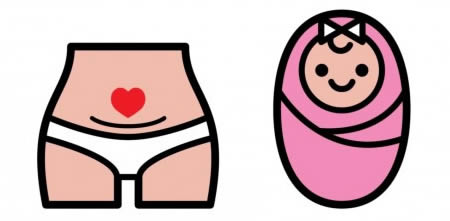
Self Care After Cesarean Section, With an Emphasis on Baby Care Ergonomics
Today we talk about ergonomics with baby care after a cesarean section. It’s important for all new parents to conserve energy and protect their own bodies while adjusting to the care of a new baby, especially those who have had a cesarean. Today we will discuss body mechanics of picking up a baby, breastfeeding, and the like after a C-Section.
Lifting Restrictions
As a cesarean section is an abdominal surgery, your doctor will likely advise you to not lift anything over 8-10 lbs, depending on the doctor as well as the details regarding your cesarean and your personal health. Lifting restrictions typically last anywhere from 6-8 weeks. This may prevent you from lifting household items heavier than a gallon of milk… That means no carrying baskets of laundry or heavy bags of groceries.
This will also mean that you won’t be able to lift and carry an older sibling during this time. If possible, encourage the older sibling to climb onto your lap, into bed, into the car, etc. Also, get help around the house and with chores such as grocery shopping, lifting heavy loads of laundry, and other activities that require moderate to heavy lifting.
Setting Up Stations
Set up stations for baby care with needed supplies that support and protect the body by eliminating unneeded bending, lifting, and twisting.
Changing Station
Bending over the changing table can cause a sore back, shoulders, and pain in hands and forearms. Set up a station that allows you to change and dress your baby at hip height, if possible. Have all the supplies you need at hand, in a place where you do not need to bend and struggle to reach or find things.
Nursing Station
Having a “nursing station” with comfortable furniture and all of your needed supplies will allow you to nurse your baby while you rest. Many find rocking chairs or recliners with footstools to work well as furniture. Use a pillow to support your low back and another pillow to support the baby and to keep them off the c-section scar. Have a shelf next to the chair with all supplies you may need including diapers, wipes, changing pads, towels, blankets, a pitcher with water, an extra change of baby clothes, and anything else you may need- tissues, a book, a book, magazines, a phone charger, etc. This will reduce your need to get up and down, and allow the baby to nurse while you rest.
Posture and Body Mechanics with Lifting and Holding Your Baby
Position your body so that you are lifting your baby straight on, not from the side or at an angle. Get close to the crib, changing table, etc. so you avoid unnecessary strain. Some may find having a step stool near the baby’s crib helpful to support one foot and un-weight the low back.
When lifting, use the BACK acronym:
Back is kept straight.

Avoid twisting to lift or carry the baby.
Close to body- keep the baby close to you as you lift and carry.

Keep movements smooth and avoid jerky or quick movements.
Car Seats
Another aspect of proper self care after cesarean section involves getting the baby in and out of the carseat. It is difficult to do without getting into an awkward (and pain inducing) position. Do not keep both of your feet on the ground and do not twist your entire body to place the baby into the seat, this will put your shoulders, knees, back, wrists, and neck at risk for injury.
If the car seat is in one of the outside seats, put one leg into your car and face the car seat to put the baby in and out of the car seat. This position takes some of the pressure off of your back.
If the car seat is in the middle seat, lunge into the car as much as possible to get the baby in and out of the seat, hinging from your hips to keep your back straight.
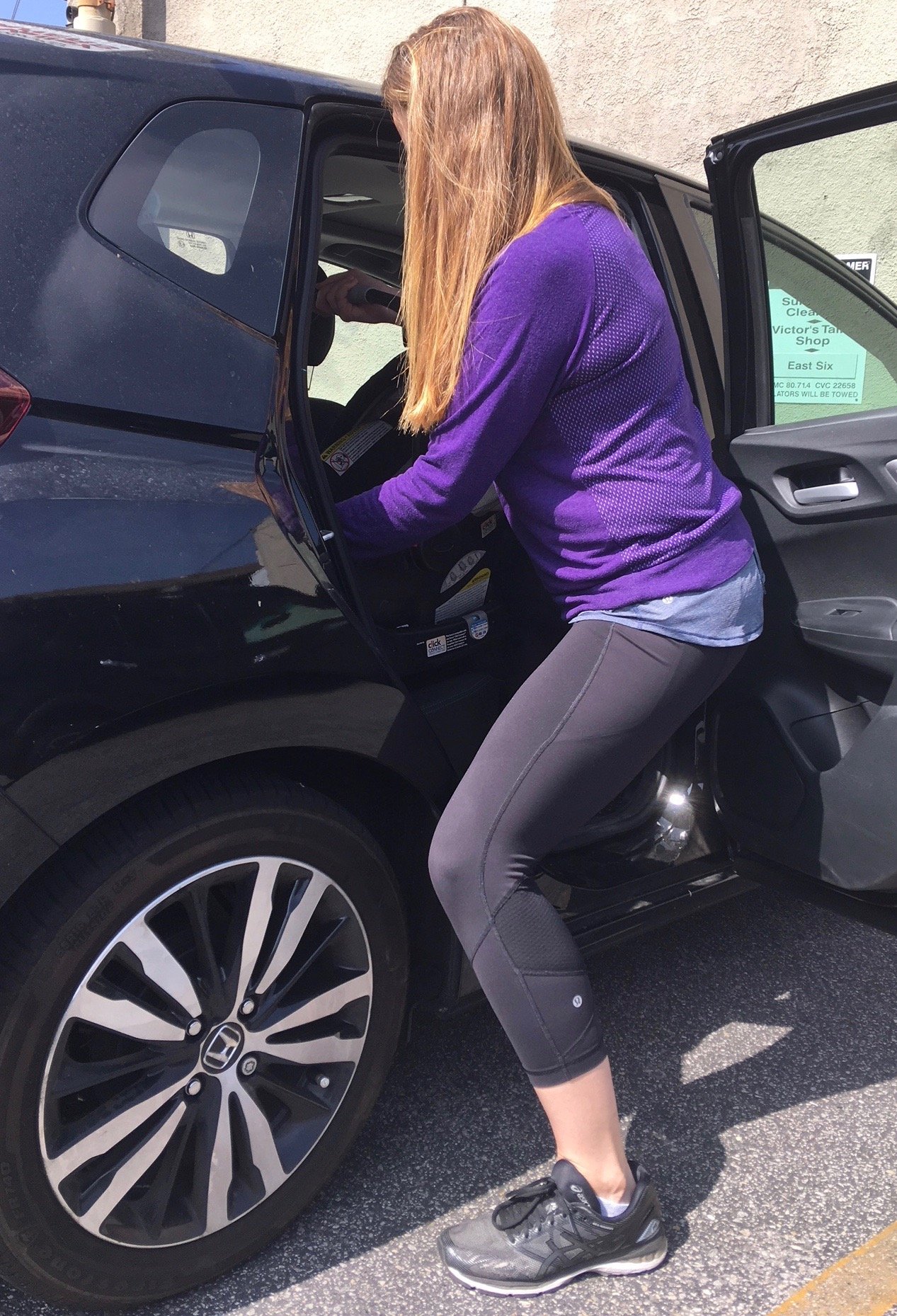
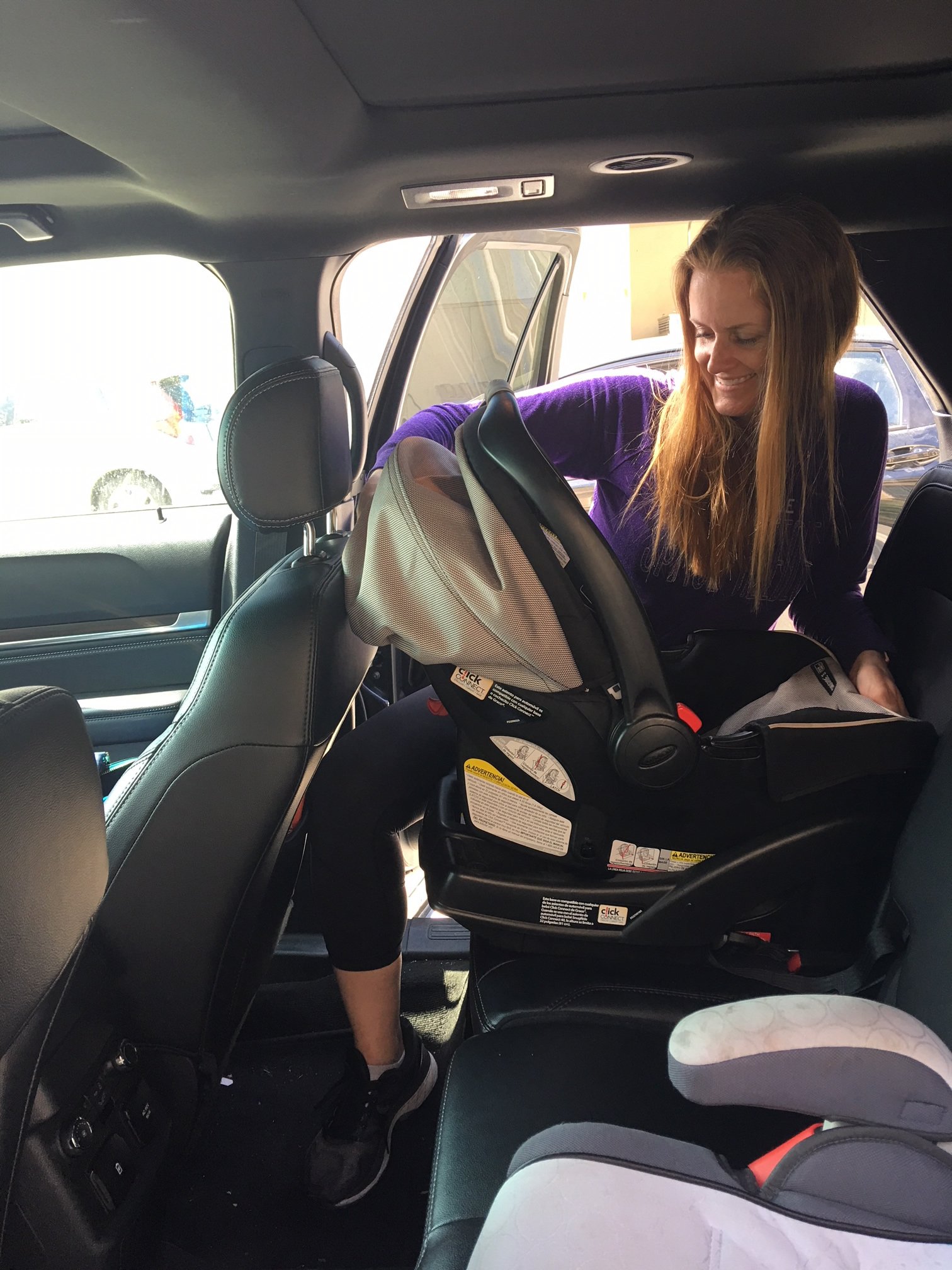
Nursing Your Baby
Whether you are breastfeeding or bottle-feeding, it is important to avoid straining the neck and shoulders and to keep the baby up off the cesarean incision. For more information, check out Heather’s article “Help for Postural Pain after Breastfeeding” published in the International Childbirth Education Association journal.
Side lying position
When nursing in a side lying position, use pillows to support your back, have a pillow between the knees, and wedge a folded bath towel between your tummy and the bed to support your incision. Place a pillow under baby as well, to support their body.
Upright position
When nursing sitting upright, use lots of pillows to support your body. Place pillows on your lap under the baby to protect your incision. If you are in a chair or recliner, you can wedge pillows between your body and the arm rests. If you are sitting up in bed, place pillows under the knees to get pressure off your low back.

Neck and Upper Extremity Stretches
Caring for a newborn can hurt your neck and upper back. This stretch series was designed as a vital step toward proper self care after cesarean section by Femina owner, Heather Jeffcoat, DPT, to correct postural issues that have to do with baby feeding.
Chest openers and biceps stretch:
– Clasp her hands behind the low back (A)
– Inhale, lift the shoulders down and back.
– Exhale, maintain that posture in the shoulders and lift the arms up (B).
This stretch is intense, and should be broken down into 3 sets of 15 seconds for your comfort. This stretch should be performed after each feeding.
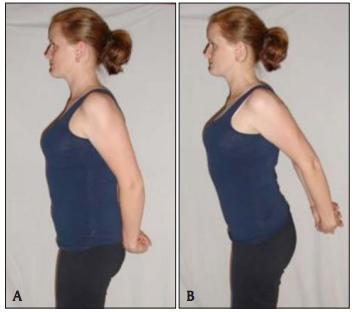
Neckstretch series:
– Drop one ear down towards the shoulder (A)
– Rotate the head down and to the side (B)
– Tilt her up and away (C).
Hold each position for 30 seconds. Repeat twice each side. Do this series at least 2 times per day.
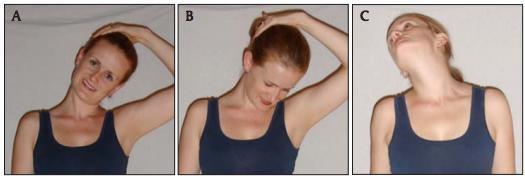
With these ergonomic principles of self care after cesarean section, caring for your new love will be more joyful and less painful. Contact your local physical therapist or licensed lactation consultant for more tips on baby care without hurting your body.
Resources
Jeffcoat, H. (2009). Help for Postural Pain after Breastfeeding. International Journal of Childbirth Education
Kiley, C. (2013). 25 Tips for Preventing Injury in Infant Caregivers.
Worksafe Victoria. (2011). Lifting children in/out of cots and highchairs or on/off change tables

